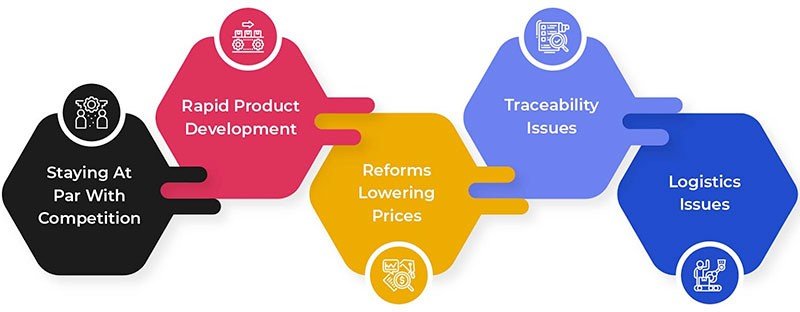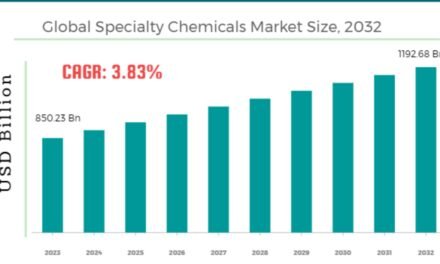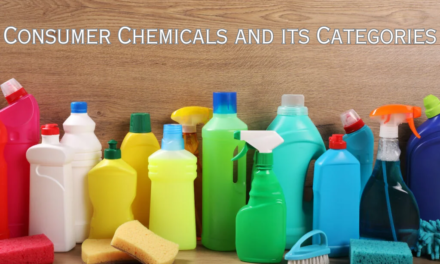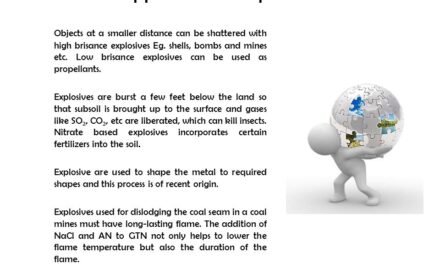Generics are having a transformative impact on the pharmaceutical chemical supply chain by driving demand for cost efficiency, increasing complexity in sourcing and manufacturing, and altering market dynamics. These impacts stem from the unique challenges and opportunities associated with producing generic drugs, which require the same quality and efficacy as branded drugs but at significantly lower costs.
1. Cost Efficiency Pressure
- Price Sensitivity:
- Generics are priced lower than branded drugs, creating immense pressure to minimize costs throughout the supply chain.
- Impact:
- Manufacturers focus on reducing costs for Active Pharmaceutical Ingredients (APIs) and intermediates.
- Shift toward low-cost production hubs like India and China, which dominate generic API manufacturing.
- Challenges:
- Balancing cost reduction with compliance to stringent quality and safety regulations.
2. Supply Chain Localization
- Regional Manufacturing:
- Governments are incentivizing local production of APIs and generics to reduce dependency on imports, especially for essential medicines.
- Impact:
- Reshoring initiatives in regions like the US and EU are altering global supply chain dynamics.
- Encourages investment in domestic API production facilities.
- Challenges:
- Higher labor and infrastructure costs in developed markets may counter cost-saving efforts.
3. Increased Demand for APIs
- Volume-Driven Growth:
- Generics require large volumes of APIs to meet the growing demand for affordable medicines.
- Impact:
- API manufacturers scale production capabilities and optimize processes to meet bulk requirements.
- Challenges:
- Ensuring consistent supply while maintaining quality and compliance across batches.
4. Supply Chain Complexity
- Multiple Sourcing Requirements:
- Generic manufacturers often work with multiple suppliers to ensure uninterrupted API and raw material availability.
- Impact:
- Increased complexity in managing supplier relationships, quality audits, and logistics.
- Challenges:
- Variability in quality and lead times across suppliers, especially in emerging markets.
5. Quality Assurance and Compliance
- Stringent Standards:
- Generics must meet the same quality and regulatory standards as branded drugs, necessitating rigorous testing and documentation.
- Impact:
- Manufacturers invest in quality control systems and ensure compliance with GMP and other international standards.
- Challenges:
- Higher scrutiny of API manufacturing sites by regulators like the FDA and EMA.
- Frequent audits and recalls due to non-compliance issues.
6. Globalization of the Supply Chain
- Cross-Border Sourcing:
- Generic manufacturers rely on global supply chains to source APIs and intermediates at competitive prices.
- Impact:
- Increased exposure to geopolitical risks, trade restrictions, and transportation disruptions.
- Challenges:
- Managing supply chain resilience and mitigating risks from events like the COVID-19 pandemic.
7. Focus on Green Chemistry
- Sustainable Practices:
- Generics manufacturers are adopting greener production methods to align with regulatory and consumer expectations.
- Impact:
- Investment in eco-friendly technologies like biocatalysis and solvent recovery systems.
- Challenges:
- Balancing sustainability efforts with cost constraints.
8. Innovation in Manufacturing Processes
- Process Intensification:
- Continuous manufacturing and advanced process technologies are being adopted to enhance efficiency and reduce costs.
- Impact:
- Faster production cycles and improved scalability for API manufacturing.
- Challenges:
- High initial investment in advanced manufacturing infrastructure.
9. Regulatory Dynamics
- Streamlined Approvals:
- Regulatory bodies have expedited pathways for generics, increasing competition and lowering costs.
- Impact:
- Accelerated time-to-market for generics benefits consumers but pressures the supply chain to keep up with rapid production schedules.
- Challenges:
- Maintaining compliance with evolving regulatory requirements in multiple jurisdictions.
10. Emerging Markets
- Increased Access:
- Generics have expanded access to affordable medicines in developing countries.
- Impact:
- Drives demand for APIs and pharmaceutical chemicals in these regions.
- Challenges:
- Infrastructure gaps and regulatory inconsistencies in emerging markets complicate supply chain operations.
11. Consolidation of API Suppliers
- Market Concentration:
- A few major players dominate the generic API market, leading to price competition and efficiency gains.
- Impact:
- Reduces variability in supply but increases dependency on a smaller number of suppliers.
- Challenges:
- Supply disruptions from dominant players can cause widespread shortages.
12. Digital Transformation
- Supply Chain Visibility:
- Adoption of digital tools like blockchain and AI to improve traceability and predict disruptions.
- Impact:
- Enhances transparency and efficiency in sourcing, manufacturing, and distribution.
- Challenges:
- High costs of digital transformation and resistance to change in traditional manufacturing setups.
13. Impact of Patent Expirations
- Wave of Generics:
- Expiration of patents for blockbuster drugs creates opportunities for generics and intense competition.
- Impact:
- Drives innovation in process optimization to achieve cost leadership.
- Challenges:
- Shorter exclusivity periods for generic manufacturers.
14. Focus on High-Value Generics
- Specialized Generics:
- Complex generics (e.g., inhalables, injectables) require advanced APIs and formulations.
- Impact:
- Increases demand for high-purity pharmaceutical chemicals and specialized manufacturing capabilities.
- Challenges:
- Higher technical and regulatory barriers compared to standard generics.
15. Impact of Global Health Crises
- Resilience and Redundancy:
- Events like the COVID-19 pandemic have highlighted the need for resilient supply chains.
- Impact:
- Companies are diversifying suppliers and increasing inventory levels for critical raw materials.
- Challenges:
- Balancing cost control with the need for redundancy and risk mitigation.
Conclusion
Generics are reshaping the pharmaceutical chemical supply chain by driving cost efficiency, innovation, and sustainability. While they create opportunities for expanding access to affordable medicines, they also introduce challenges in managing quality, compliance, and supply chain resilience. To thrive in this competitive landscape, companies must adopt advanced manufacturing technologies, strengthen supplier relationships, and invest in digital transformation for enhanced visibility and efficiency.
Hashtags
#GenericsPharma #GenericsSupplyChain #PharmaGenericsImpact #GenericDrugs #GenericsRevolution #PharmaceuticalChemicalSupplyChain #PharmaChemicals #APISupplyChain #ChemicalSupplyChain #SupplyChainDynamics #PharmaLogistics #AffordableMedicine #GenericsForAll #AccessToMedicines #LowerDrugCosts #AffordableHealthcare #GenericsMarketGrowth #PharmaIndustryTrends #GenericsBoom #GlobalPharmaTrends #GenericDrugsMarket

















